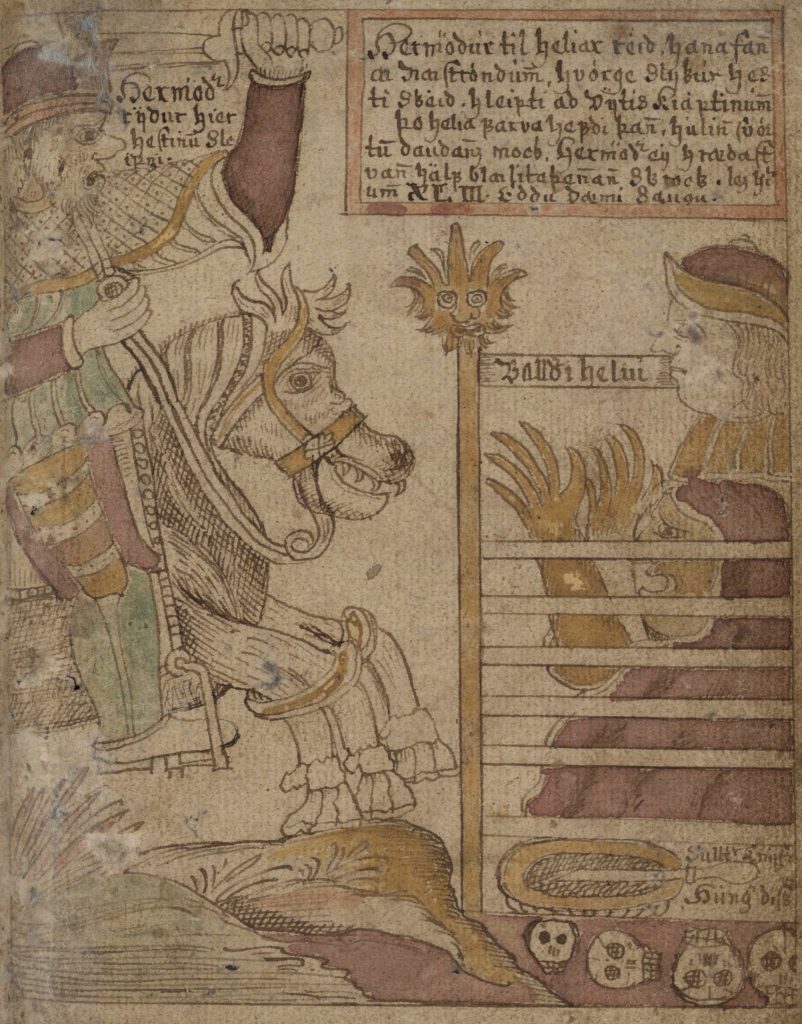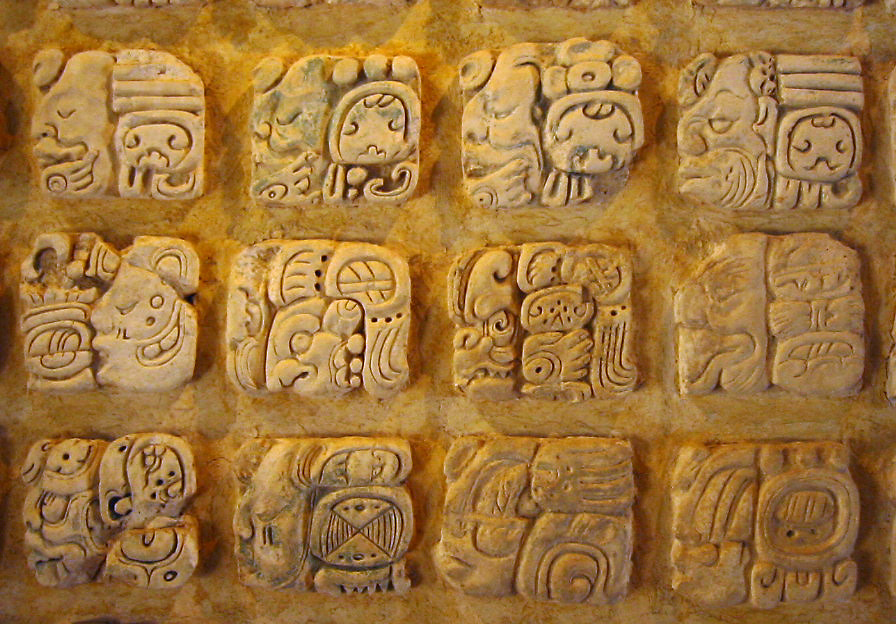Imagine a website that allows people from a variety of academic and non-academic backgrounds to learn ancient languages and research their histories. Now imagine it existing in 1999, way back in the early years of the internet. That’s the year the Linguistics Research Center (LRC) launched its free, online lesson series.
The internet was a different place back then. Most users still accessed it through slow and noisy dial-up modems. Wikipedia wouldn’t exist for another two years. It was hardly an era of abundant online resources. But the LRC, founded at The University of Texas at Austin in 1961, has always been ahead of its time.
At its outset 60 years ago, the LRC pioneered computer-assisted language translation, ultimately creating the METAL Machine Translation (MT) system. Computers at that time were not powerful enough to use the brute-force statistical-comparison approach employed by modern translation programs, so linguists had to work together as engineers, creating extensive, rule-based algorithms (some of which are still in use today). At the height of the project, the LRC had 40 full-time staff addressing the problem.
Over the past 20 years, the LRC has focused on providing free online resources for learning, and learning about, ancient languages. “The LRC is unique in the College of Liberal Arts in that all of its offerings are in the virtual space,” says Hans Boas, professor and chair of Germanic Studies at The University of Texas at Austin, who served as LRC director from 2012 to 2020. “And the people who access our websites literally come from all over the world.”
Studying ancient languages is different from learning a modern language, where the goal is generally to gain enough fluency to have a conversation. In the case of languages that are no longer spoken, such as Hittite or Old Norse, the reward is not conversing with individuals, but rather engaging with broader cultures and histories by reading primary sources in their original language.

“Anybody who has learned another language is familiar with how incomplete translations are from one language to another and how different an experience it is to be able to talk to somebody in their own language. And when you’re getting into history, the same sort of thing applies,” says Danny Law, associate professor of linguistics and current director of the LRC. “In general, I think there is a very high value that we should attach to understanding and appreciating our history and this is one way to do that.”
And while various free and paid options now exist for learning modern languages, the resource landscape for ancient languages hasn’t expanded much in the two decades since the LRC started offering online lessons. For someone new to ancient languages, most of the online options are either discussion boards or highly specialized academic literature, both of which tend to contain too much jargon to be accessible to anyone outside the field for which it was written.
The core goal of the LRC has always been to provide free and up-to-date information that can be utilized by people from any background. “I think that’s why these resources have been around for a long time,” says Law. “Because that is the challenge of learning ancient languages.”
In addition to lesson series in 18 ancient languages, the LRC website also features an Indo-European Lexicon (IELEX), an extensive online linguistic database that allows users to explore the histories and relationships of various Indo-European languages. The IELEX catalogues language “etyma,” which are the shared starting points from which later words develop, and their “reflexes,” which are all the words across different languages that spring from those starting points. As with the ancient language lessons, the aim of the IELEX is to be accessible to both specialists and non-specialists interested in learning about word origins and development.
While the LRC continually expands its library of Indo-European language resources (Old Italian, the midpoint between Latin and modern Italian in which Dante’s The Divine Comedy was written, will soon join the ranks) it is also working to create resources for languages outside of the Indo-European family, which covers only languages from Europe, Asia, and the Middle East.
One such project, the Early Mesoamerican Languages Initiative (EMLI), is building both a lexicon and language lessons for older Indigenous languages in the Americas. Unlike the Indo-European languages, which stem from a single linguistic family, Mesoamerican languages come from several language families. The Mayan family will be the first to be incorporated into the LRC resources. “UT is already a global powerhouse in the study of Mesoamerica, so it’s fitting for the LRC to be bringing that part of the world into the resources that we offer,” says Law.
As with other LRC languages, the goal here is to help people learn enough to read original texts. Written records for languages in the Mayan family vary, with some, like Kʼicheʼ, only going back a few hundred years to the time of first European contact. Whereas Maya hieroglyphics, Law’s own area of specialization, have been found from more than 2,000 years ago.
Another recent project, based on research done by Law and UT colleagues David Quinto-Pozos and Justin Power, chronicles the history of sign languages. Ultimately, they are building a comparative database of signs from 13 sign languages, all of which are still in use, and their historical connections. This comparison of modern sign languages will be the first attempt to chart how sign languages have changed over time. The role of the LRC will be to make the research available to the deaf community and others outside of academia.
The LRC is also creating an initiative on language contact in Texas, which will examine how several European languages that are spoken in Texas evolve over time through contact with English. In 2019, they instituted the Research Cluster on Multilingualism in Texas. Building on existing UT Austin research projects on Spanish, Czech, Polish, and German, affiliated faculty members engage in research on linguistic, political, social, economic, and legal problems, and on cultural, psychological, technical, medical, and educational dimensions of multilingualism.
Each month 20,000 to 30,000 different users from over 130 countries around the world visit the LRC website. Some are professionals doing research in their fields. Others are teenagers taking a first interest in ancient languages or retirees who finally have enough time to learn something new. Still others are people from religious traditions who want to read their texts in the original languages. The IELEX even provided inspiration for an exhibit by visual artist Mary Kuper. “You have people coming at this from a whole bunch of different places,” says Law. “It’s kind of amazing to see the breadth and variety of people that find these resources useful.”
Boas emphasizes the synergetic relationship between the LRC and UT Austin’s Department of Linguistics as well as several language and area studies departments. Through its reputation in the linguistics world, the LRC draws graduate students and faculty to those departments, and those scholars in turn lend their talents to the center’s ever-growing slate of projects. But even more important is that the LRC then takes all this complex knowledge and converts it into formats that are accessible and engaging to a larger population well beyond the university.
“This is the crucial aspect for us,” say Boas. “The stuff that in past decades and centuries you would have to have a lot of money and attend an elite school to learn, we make it available for free.” 60 years after its start, the LRC is still providing resources not found anywhere else and branching out into new areas. “It’s pretty remarkable for a center to have lasted that long,” Law notes.
